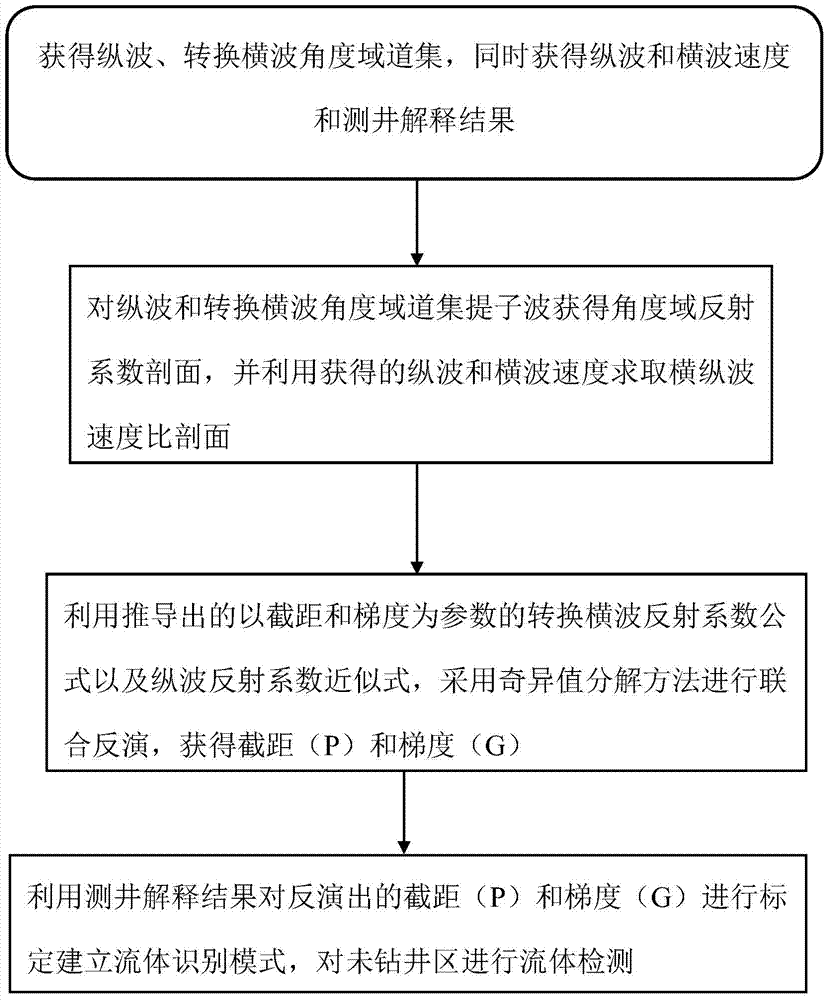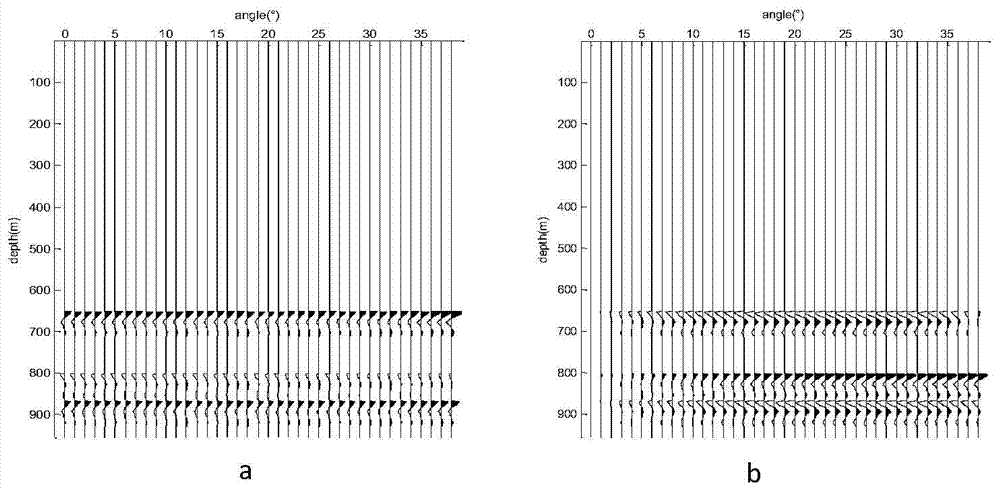Method for combined inversion of intercept and gradient based on compressional waves and converted shear waves
A technology of converting shear waves and joint inversion, applied in the field of geophysical exploration, can solve the problems of reducing the ambiguity of the inversion process, increasing the stability of the inversion results, and difficult to overcome the instability of the extraction process and the ambiguity of the extraction results. Achieve the effect of reducing multi-solution, reliable method and improving stability
- Summary
- Abstract
- Description
- Claims
- Application Information
AI Technical Summary
Problems solved by technology
Method used
Image
Examples
Embodiment Construction
[0026] Such as figure 1 As shown, the method of joint inversion of intercept (P) and gradient (G) based on longitudinal wave and converted shear wave includes the following steps:
[0027] (1) Obtain the longitudinal wave and converted shear wave angle domain gathers, and obtain the longitudinal wave and shear wave velocity and logging interpretation results at the same time; the specific method is as follows:
[0028] Based on the seismic data collected in the field, the seismic imaging method is used to extract the pre-stack seismic angle gather data;
[0029] Obtain compressional and shear wave velocities and logging interpretation results based on field logging data;
[0030] (2) Extract wavelets from the angle domain gathers of longitudinal waves and converted shear waves to obtain the angle domain reflection coefficient profile, and use the obtained longitudinal wave and shear wave velocities to obtain the shear and longitudinal wave velocity ratio profile; the specific...
PUM
 Login to View More
Login to View More Abstract
Description
Claims
Application Information
 Login to View More
Login to View More - R&D
- Intellectual Property
- Life Sciences
- Materials
- Tech Scout
- Unparalleled Data Quality
- Higher Quality Content
- 60% Fewer Hallucinations
Browse by: Latest US Patents, China's latest patents, Technical Efficacy Thesaurus, Application Domain, Technology Topic, Popular Technical Reports.
© 2025 PatSnap. All rights reserved.Legal|Privacy policy|Modern Slavery Act Transparency Statement|Sitemap|About US| Contact US: help@patsnap.com



